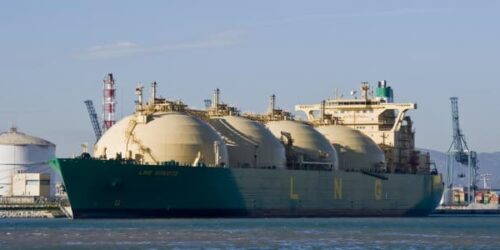On the morning of March 23, the world was shaken by the unfortunate news of the Suez Canal being blocked. At 07.40 local time, the Ever Given ran aground when strong winds blew it off course. The importance of the Suez Canal to global shipping can hardly be underestimated. Pundits were quick to point out the blockade’s effect on global supply chains. Energy prices were anticipated to be impacted too. However, the blockade failed to significantly move oil and gas prices.
Taking a closer look at global LNG markets, the world’s largest importers are predominantly located in two areas: Europe and East Asia. In the area of energy exports, natural gas and oil are sourced from roughly the same areas (with some exceptions such as Australia). The blockade’s effect, however, was different on LNG prices than oil with moderate price rises in both Europe and Asia.
Europe is fortunate enough to be surrounded by countries that hold major gas resources in virtually all directions except for the Atlantic Ocean. While domestic production is dwindling due to depletion or political reasons (the Dutch are scaling down production due to tremors), imports are on the rise. Europe’s massive pipeline infrastructure connects it with producers in the north (Norway), south (Algeria), and east (Russia and the Caspian region).Related: U.S. Oil Production Is About To Climb

Although LNG demand is rising, the majority of the consumed gas is still imported through pipelines. Europe’s high dependency on Russian gas and Moscow’s alleged aggression, has raised concerns. LNG has become the preferred choice of diversification. However, compared to Asia, European customers enjoy a higher level of energy security.

The availability of piped gas and the large storage capacity in several northwestern European countries that can act as a buffer in case of supply disruptions have reduced price volatility.
The second reason why LNG markets haven’t been disrupted after the blockade is the growing importance of the Asian market. The economies in the East require ever-larger volumes of raw materials and energy. The rebalancing of the LNG market has been going on for years as ever-larger volumes of LNG are sent to Asia.
Shipped natural gas has been especially important for East Asia due to the lack of major pipeline infrastructure connecting it with producers. Except for China, which has constructed several pipelines to import natural gas, other Asia countries lack the same level of connectivity. Despite the infrastructure, China is also seeing a rise in imports of LNG as consumption has risen sharply.
During the recent crisis in the Suez canal, Asia was already the most important destination for LNG. The short blockade doesn’t rule out a different outcome if it had continued for, let’s say, several weeks instead of days. Storages in Europe are already historically low due to the harsh winter and couldn’t have supported a long disruption.
However, the Suez crisis laid bare the developments in the global gas market. Asia’s phenomenal economic potential means that there is more room for growth. Southeast Asia and India are also importing ever-larger volumes of LNG. Therefore, the conclusion is that short-term disruptions of the Suez Canal will only have a moderate effect on LNG prices.






